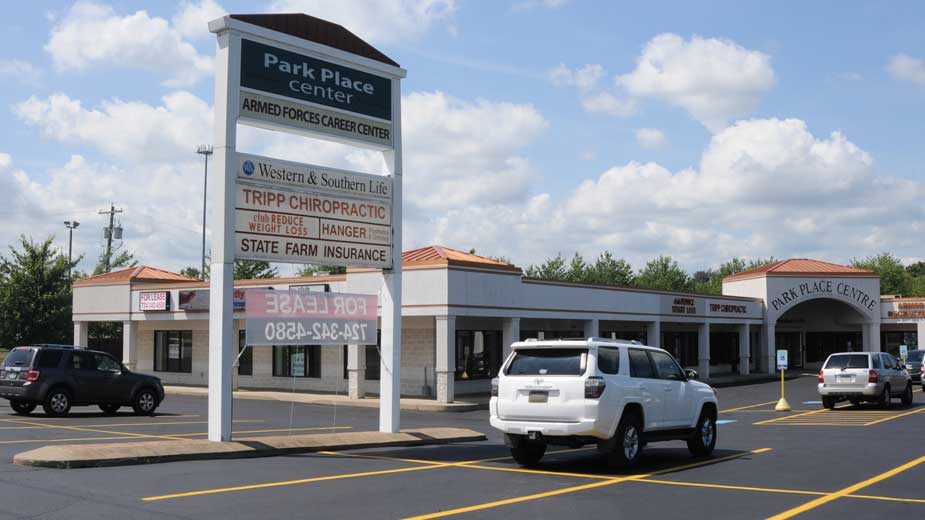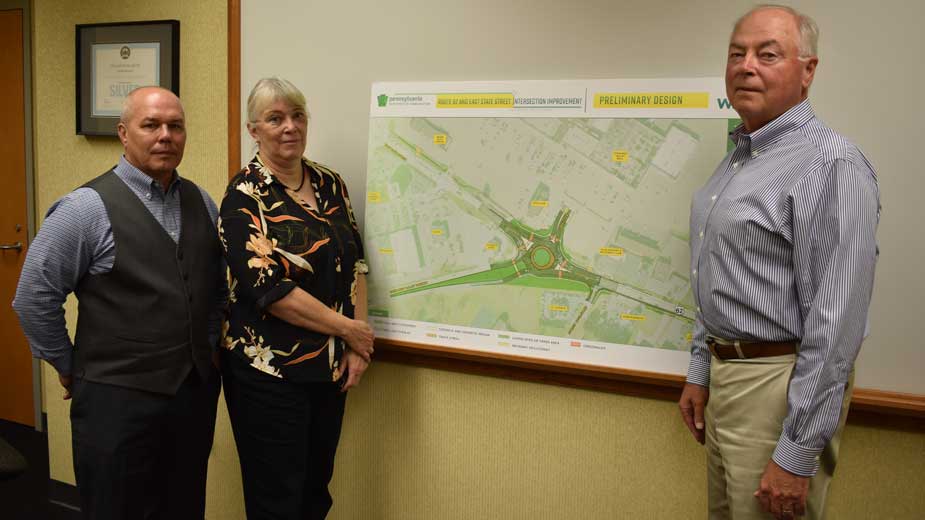New Comprehensive Plan Guides Hermitage
HERMITAGE, Pa. — A reimagining of the Shenango Valley Mall and its environs that includes aspects of a traditional downtown plus residential living is part of the plan officials envision for the city.
Redevelopment of the Shenango Valley Mall coincides with a key concern expressed by Hermitage residents during the development of its newly updated comprehensive plan, city leaders say.
Community input gathered in preparation of the Hermitage 2030 plan covers a broad range of topics, interests and concerns, but “the one that rose highest to the top” is the proposed city center concept, primarily involving the mall area, says Gary Hinkson, Hermitage city manager.
In June, the Hermitage Board of Commissioners adopted Hermitage 2030, a plan intended to provide a “roadmap” for the next 12 to 15 years that charts land use, transportation, recreation and economic development, Hickson says.
Goals defined as high priority in the plan include creating a “sense of place” and a walkable city center; promoting Hermitage as a city for small-business incubation and innovation; developing neighborhoods that attract families and young professionals; improving the appearance of state Route 18 (or Hermitage Road) and East State Street as entrances to the Shenango Valley; and continuing to expand the recreational system.
The Hermitage community at large and focus groups who participated in drawing up the comprehensive plan were “very interested” in seeing what could be done to revitalize the mall property, Hinkson says.
That interest was not merely in revitalizing the property in a way to attract retail but incorporating aspects of a downtown such as gathering spaces, event space, and possibly mixing in office and residential use, “so it’s not just a conglomeration of retail stores inside the building that close down at 9 o’clock,” Hinkson says.
National trends show that older people and millennials no longer are as interested in occupying single-family houses on half-acre lots three miles from town, says Marcia Hirschmann, planning and development director.
“They want to live [in town] and have places to walk to. That lifestyle is more and more popular,” she says.
Hermitage recently received a $2.5 million grant from the Pennsylvania Redevelopment Assistance Capital Program to assist in the implementation of the Town Center Redevelopment Project, which includes the Shenango Valley Mall property. The funding can be used for acquisition, infrastructure, construction and other related costs for the redevelopment of the Hermitage Town Center.
The main goals of the town center project are to revitalize the city center and make it a place where people will want to work, dine and recreate, improving the economic situation of the city and the Shenango Valley as a whole, Hinkson says.

Hirschmann says she often hears from businesses here or contemplating moving here that their employees want to work and live in a place that has amenities.
“It’s not just enough to have a job and a paycheck,” she says. “It makes it difficult when they come from outside the area and they look at the community and they wonder, ‘Where would I go on the weekend? Where would I have a good time?’ ”
Quality of life amenities are “important to us as a community that depends on the people that live here,” Hickson adds, since Hermitage relies on income taxes more than property taxes.
The Town Center project will take place in collaboration with LRC Realty, an Akron real estate developer that recently announced it would purchase the mall.
LRC has the mall and about 25 acres north of the property under contract, reports Kevin Fallon, vice president with LRC. A closing on the property won’t take place until due diligence is completed.
Accordingly, it is “too early” to discuss what plans for the property might entail or whether residential development is part of that mix. “We’re looking at all kinds of opportunities that make sense for the market,” Fallon says. Public space is another component that is being looked at for the mall, he says.
“The final plan is never the final plan until it’s built,” Fallon says. “It’s going to take time to talk with the market and come up with a good game plan.”
“The town center is going to have to be a public-private effort,” acknowledges Gary Gulla, assistant city manager. A separate large infrastructure project near the mall is slated to begin next year, the creation of a $3.9 million roundabout at the intersection of U.S. Route 62 and East State Street.
As part of the comprehensive plan, city leaders also are contemplating adjustments to zoning at the eCenter@LindenPointe campus to accommodate a broader range of businesses. Zoning there has been in place for the past 20 years.
“Industry has changed quite a bit,” Hinkson says. “One of the things that came out of the comprehensive plan was a recommendation to look at how we broaden the types of businesses that would work in LindenPointe, yet still be compatible with the vision that we have for that as a technology business park.”
The LindenPointe campus is a mixed-use development that has a trail system and wooded areas used by the community.
Hermitage owns the LindenPointe park with local developer Fred George, who has had a “very successful track record” in professional, medical and office development, Gulla says.
“On the city’s end, we’re attempting to build a center of excellence focusing on entrepreneurship and startup companies,” he continues. The city secured money for construction of the campus training and workforce-development center, which is available for companies throughout the region to use, and received funds to build out the eCenter incubator, which will get a new executive director – Jeff Meier, chief information officer at Fujitsu – later this year.
The incubator operates on “three strategic lanes,” Gulla says. First, it provides incubation and accelerator services for startups. Second, it operates a high school entrepreneurship academy. Third, it sets up private industry partnerships with local colleges and universities to work on projects, an area in which Meier is experienced.
Currently, all the suites at the eCenter are occupied, but land is available on the campus – both the city’s and George’s halves – that can be developed.
Another priority city leaders have identified is strategically investing in neighborhoods – doing a comprehensive assessment of the infrastructure and getting feedback from residents – as well as connecting those neighborhoods to the city’s parks and trails, Hinkson says.
For the past 15 years, the city has mandated pedestrian infrastructure as a component of any residential development.
The city also partners with private utilities at the beginning of the planning process, Gulla says. “We don’t want them to do their improvements ahead of us getting in there. There’s nothing worse than rebuilding a street and having the water company come in and dig it up.”
Pictured above: Hermitage city officials Gary Gulla, Marcia Hirschmann and Gary Hinkson stand before a map of a roundabout project.
Copyright 2024 The Business Journal, Youngstown, Ohio.



